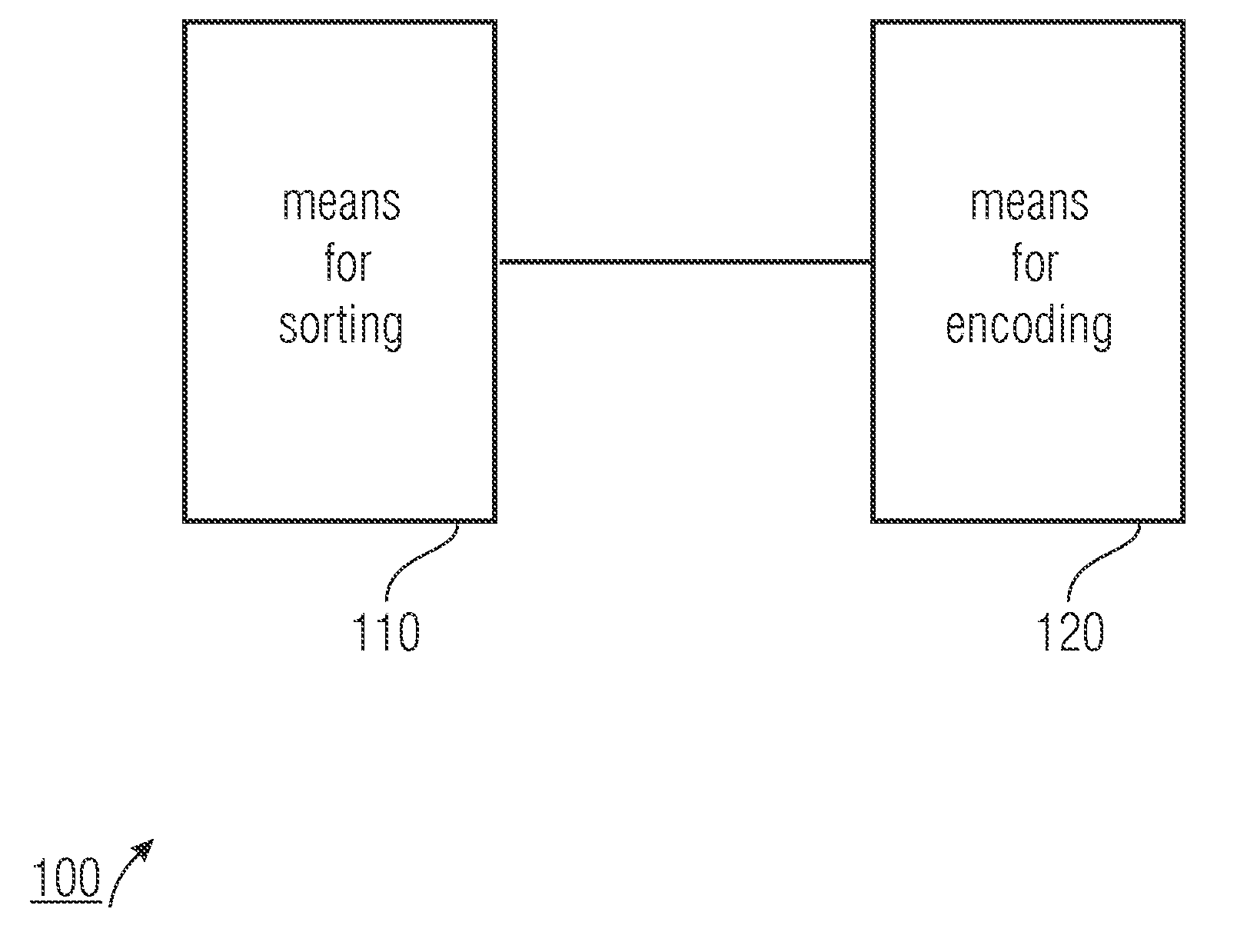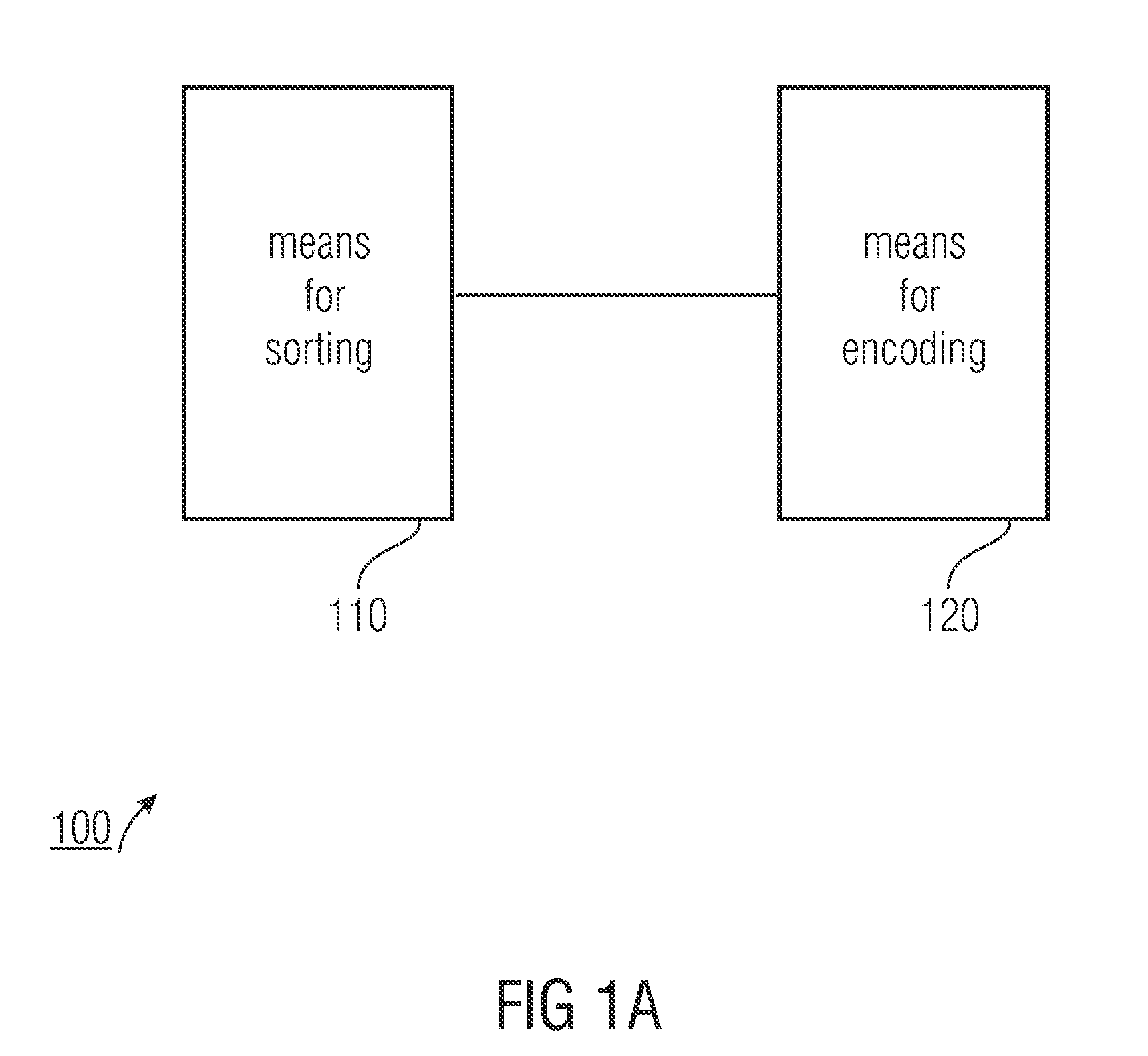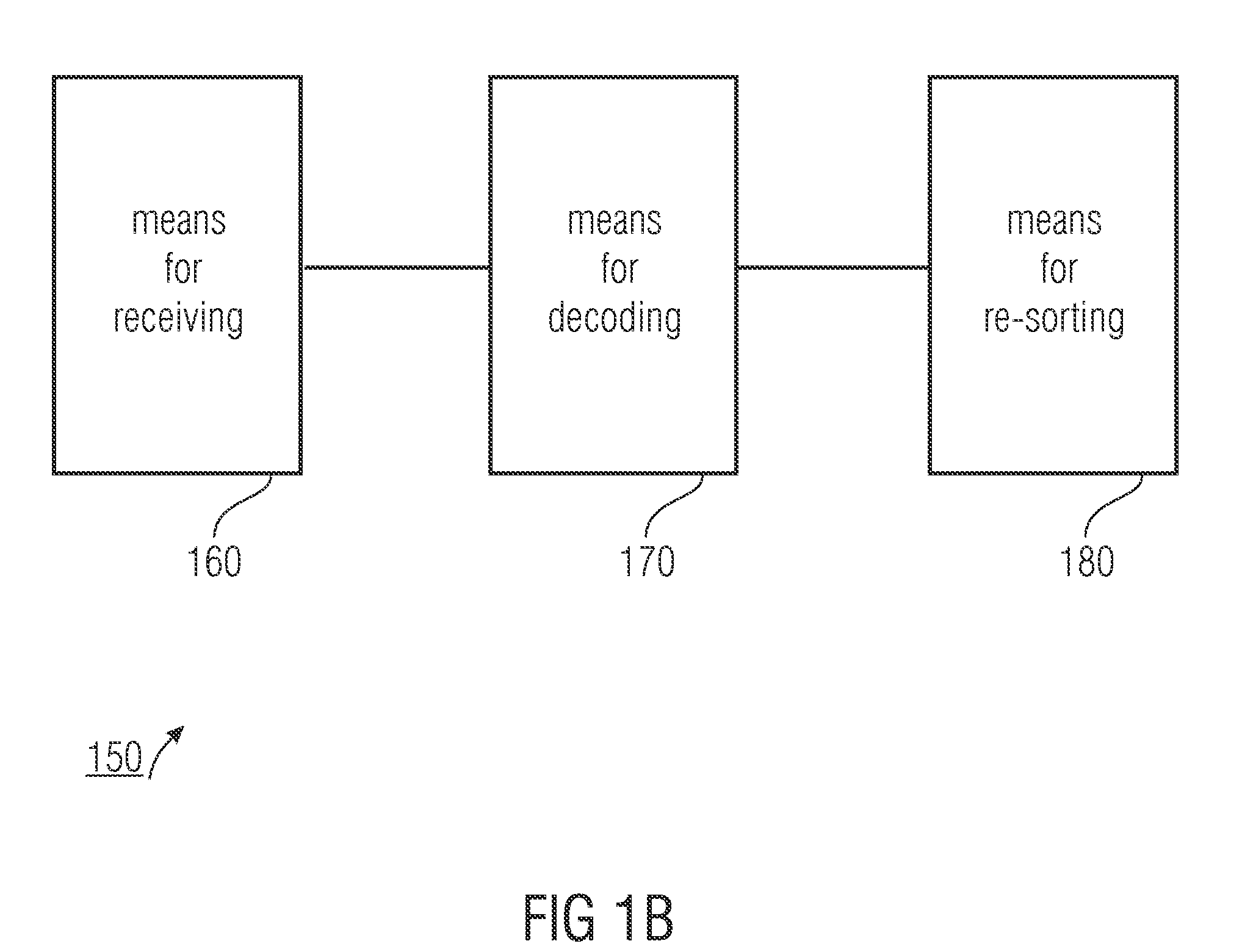Apparatus for encoding and decoding
a technology of information signals and apparatus, applied in speech analysis, color television, television systems, etc., can solve the problems of lossy data reduction, no longer possible perfect reconstruction of data, low bit rate, etc., and achieve the effect of less effort in encoding
- Summary
- Abstract
- Description
- Claims
- Application Information
AI Technical Summary
Benefits of technology
Problems solved by technology
Method used
Image
Examples
Embodiment Construction
[0075]With respect to the following description, it is to be noted that the same or similarly acting functional elements have the same reference numerals in the different embodiments, and hence the descriptions of these functional elements are mutually interchangeable in the various embodiments illustrated in the following. Furthermore, it is again to be pointed out that, in general, discrete values of a signal are referred to as samples in the following embodiments. The term sample is not to be seen as limiting, as samples may have developed by sampling a time signal, a spectrum, a generic information signal, etc.
[0076]FIG. 1A shows an apparatus 100 for encoding a sequence of samples of an audio signal, each sample within the sequence having an original position. The apparatus 100 includes means 110 for sorting the samples depending on their sizes (after processing possibly taking place, e.g. time / frequency transform, prediction, etc.), in order to obtain a sorted sequence of sampl...
PUM
 Login to View More
Login to View More Abstract
Description
Claims
Application Information
 Login to View More
Login to View More - R&D
- Intellectual Property
- Life Sciences
- Materials
- Tech Scout
- Unparalleled Data Quality
- Higher Quality Content
- 60% Fewer Hallucinations
Browse by: Latest US Patents, China's latest patents, Technical Efficacy Thesaurus, Application Domain, Technology Topic, Popular Technical Reports.
© 2025 PatSnap. All rights reserved.Legal|Privacy policy|Modern Slavery Act Transparency Statement|Sitemap|About US| Contact US: help@patsnap.com



